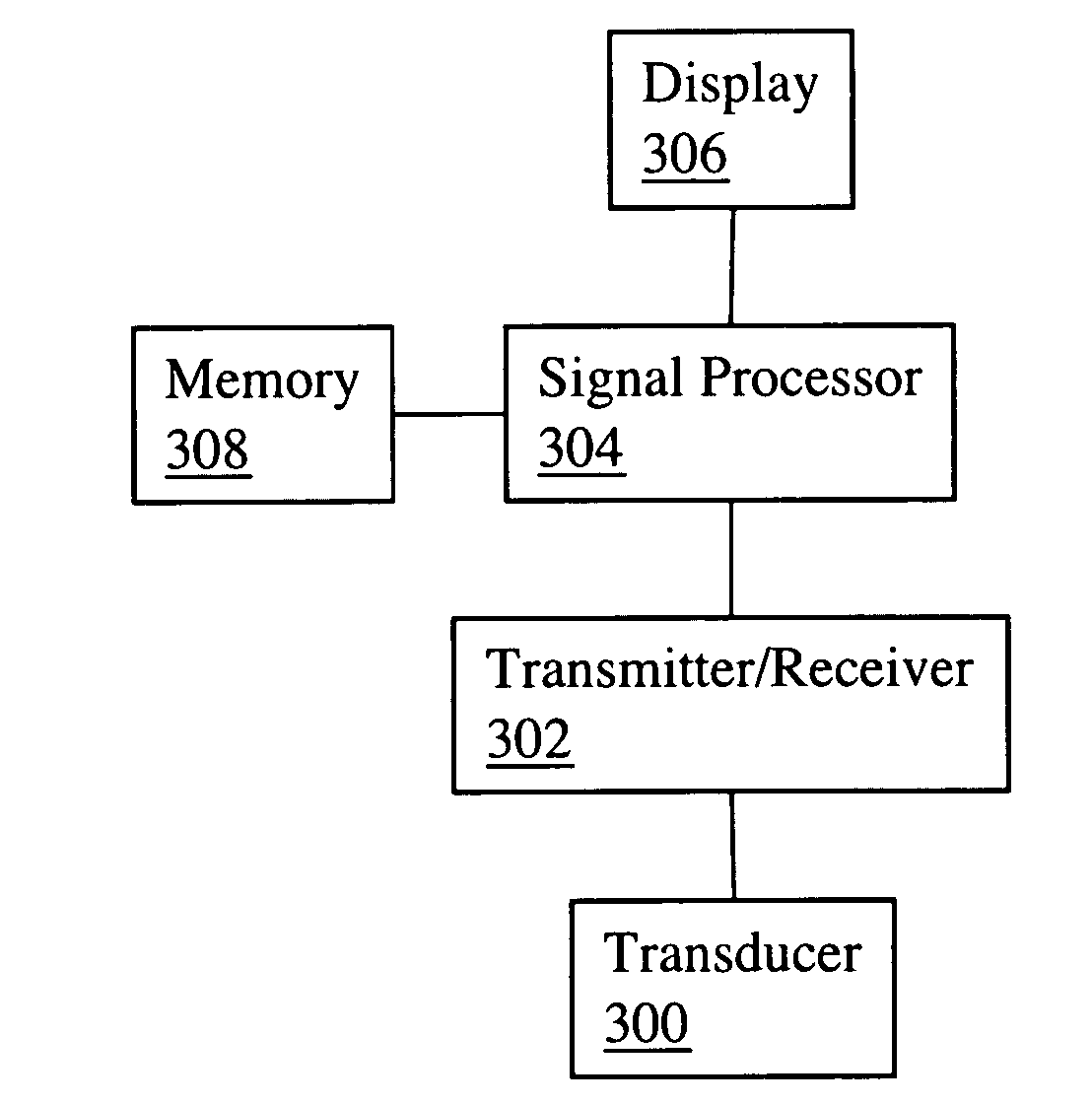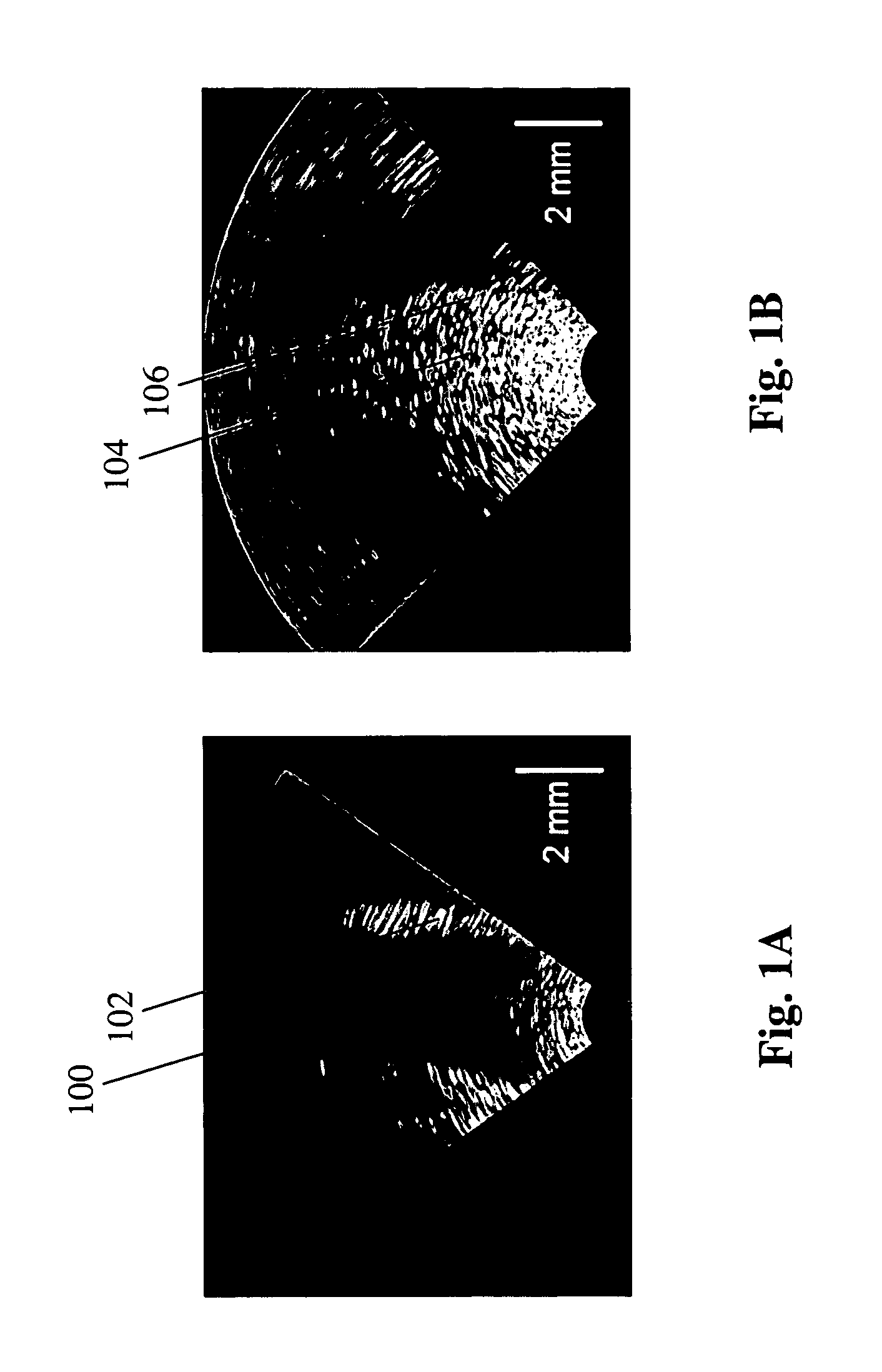T-statistic method for suppressing artifacts in blood vessel ultrasonic imaging
- Summary
- Abstract
- Description
- Claims
- Application Information
AI Technical Summary
Benefits of technology
Problems solved by technology
Method used
Image
Examples
Embodiment Construction
[0023] Embodiments of the present invention may be implemented using various types of intravascular ultrasound systems, suitably modified to process signals as will be described in more detail later. A schematic diagram of a generic ultrasound system is shown in FIG. 3. An ultrasound transducer 300 is connected to a transmitter / receiver 302. A signal processor 304 connected to transmitter / receiver 302 processes the signals, stores them in connected memory 308, and produces a digital image for viewing on connected display 306. Transducer 300 is conventionally attached to the end of a catheter which may be inserted into a blood vessel. Various types of transducer 300 may be used, including sideways-directed, forward-directed, and a combination of both. Signal processor 304 may be a programmable digital signal processor (DSP) or other processor built into an ultrasound imaging device, or it may be software running on a conventional desktop computer. Ultrasound systems may manifest the ...
PUM
 Login to view more
Login to view more Abstract
Description
Claims
Application Information
 Login to view more
Login to view more - R&D Engineer
- R&D Manager
- IP Professional
- Industry Leading Data Capabilities
- Powerful AI technology
- Patent DNA Extraction
Browse by: Latest US Patents, China's latest patents, Technical Efficacy Thesaurus, Application Domain, Technology Topic.
© 2024 PatSnap. All rights reserved.Legal|Privacy policy|Modern Slavery Act Transparency Statement|Sitemap



